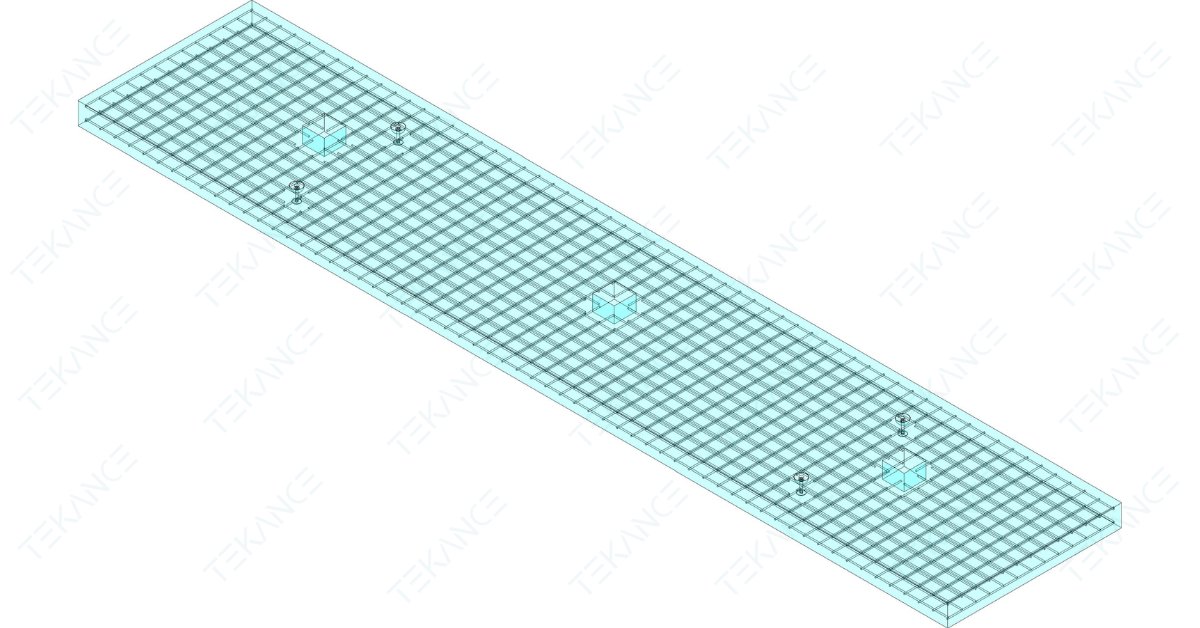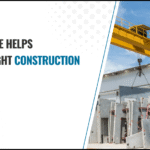Precast concrete components are changing how we build! From homes to skyscrapers, these factory-made building blocks make construction faster, stronger, and more cost-effective. But what exactly are they, and why are they so popular?
In this guide, we’ll break it down in simple, easy-to-understand language. You’ll learn what precast concrete components are, how they’re made, and why they’re a game-changer for construction projects.
Let’s get started!
Key Takeaways
- Precast concrete components are made in a factory and then transported to the construction site.
- They include beams, slabs, walls, columns, and more.
- Precast construction is faster, stronger, and more cost-effective than traditional methods.
- Used in homes, offices, bridges, and industrial buildings.
- New technologies are making precast concrete components even better.
What Are Precast Concrete Components?
Precast concrete components are concrete building blocks that are made before they reach the construction site. Instead of pouring concrete at the site (which takes time and can be messy), these components are manufactured in a factory under controlled conditions.
Once ready, they are transported to the site and assembled like giant Lego pieces
🔗 Related Read: Introduction to Precast Detailing
How Are They Different from Regular Concrete?
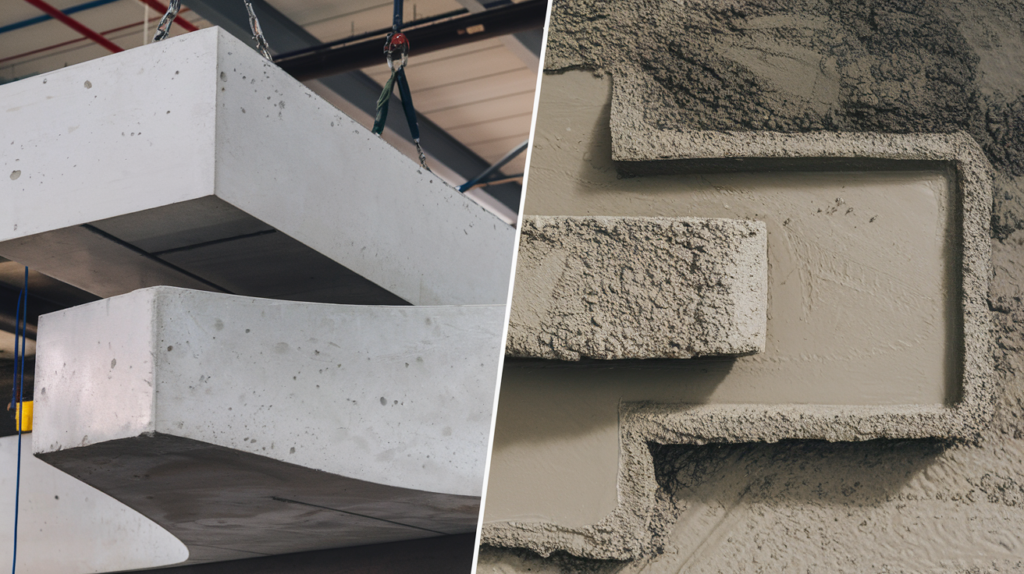
The biggest difference is where the concrete is made:
✅ Precast Concrete Components → Made in a factory, transported to the site, then installed.
❌ Cast-in-Place Concrete → Poured and set directly at the site, which takes longer.
Because precast concrete components are factory-made, they offer better quality, faster installation, and more efficiency than traditional concrete.
🔗 More Insights: How Precast Detailing Can Eliminate Costly On-Site Errors
Why Use Precast Concrete Components?
Precast concrete has some big advantages over traditional construction methods. Here’s why:
1. Faster Construction
Since the components are pre-made, builders just need to assemble them at the site. This can save weeks or even months compared to traditional construction.
2. Stronger and More Durable
Because precast concrete components are cured in a controlled factory environment, they are stronger and last longer than concrete poured on-site.
3. Cost-Effective
Faster construction means lower labor costs. Plus, factory production reduces material waste, saving money in the long run.
4. Better Quality Control
Each component is tested for strength and durability before it even reaches the site. This means fewer construction mistakes and higher-quality buildings.
5. Eco-Friendly
Precast concrete components reduce construction waste, and many manufacturers use recycled materials to make them even more sustainable.
🔗 Industry Insights: 2025 Trends in Precast Concrete Detailing
Types of Precast Concrete Components
Not all precast concrete components are the same. They come in different shapes and sizes, depending on their use.
1. Precast Beams
These are horizontal structural elements used to support roofs, floors, and bridges.
- Types: I-beams, T-beams, L-beams
- Common Uses: Bridges, highways, commercial buildings
2. Precast Slabs
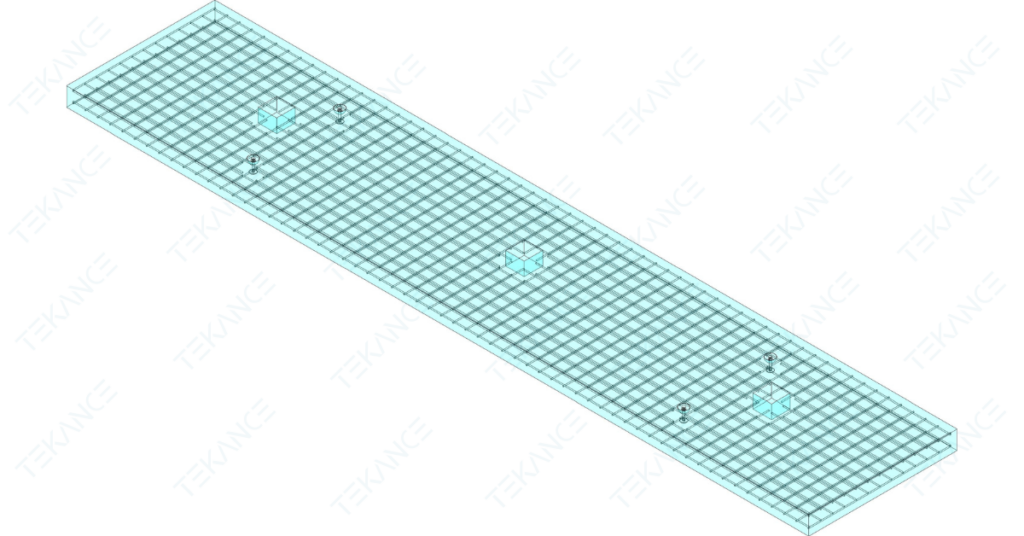
These are flat concrete panels used for floors and roofs.
- Types: Hollow-core slabs, solid slabs, double-T slabs
- Common Uses: High-rise buildings, parking garages, stadiums
3. Precast Walls
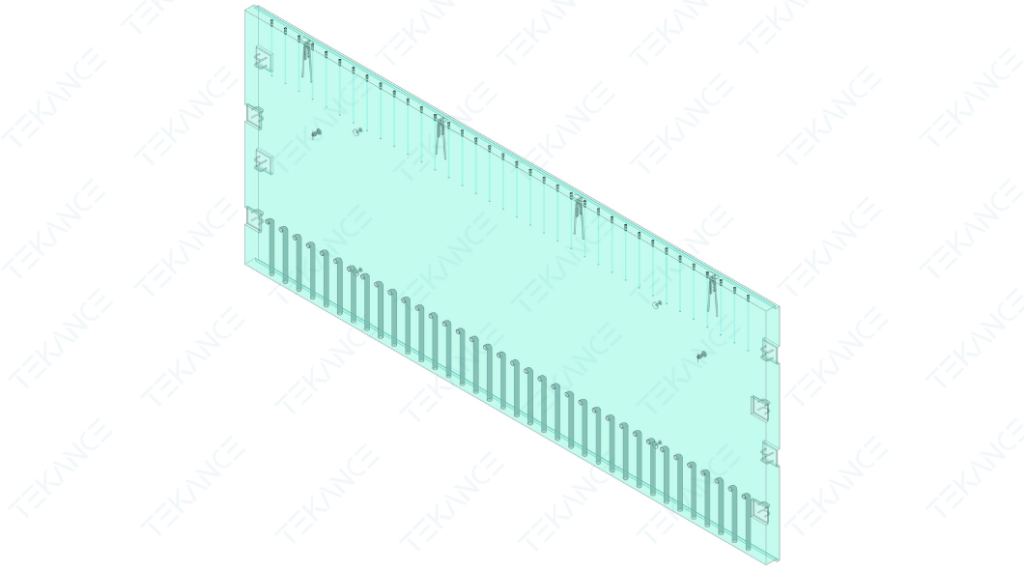
Walls made from precast concrete can be load-bearing or decorative.
- Types: Load-bearing walls, non-load-bearing walls, insulated panels
- Common Uses: Apartment buildings, factories, shopping malls
4. Precast Columns
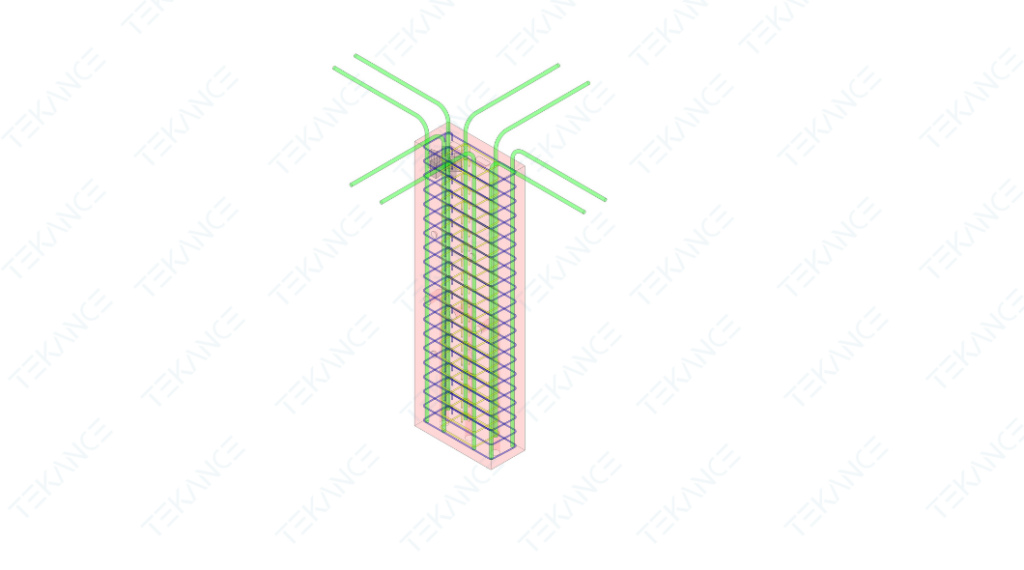
These are vertical structural elements that carry loads from beams and slabs.
- Common Uses: Multi-story buildings, bridges, warehouses
5. Other Precast Elements
Some other common precast components include:
- Precast Stairs → Quick and easy installation for buildings
- Precast Facades → Decorative panels for exterior walls
- Precast Foundations → Strong bases for buildings
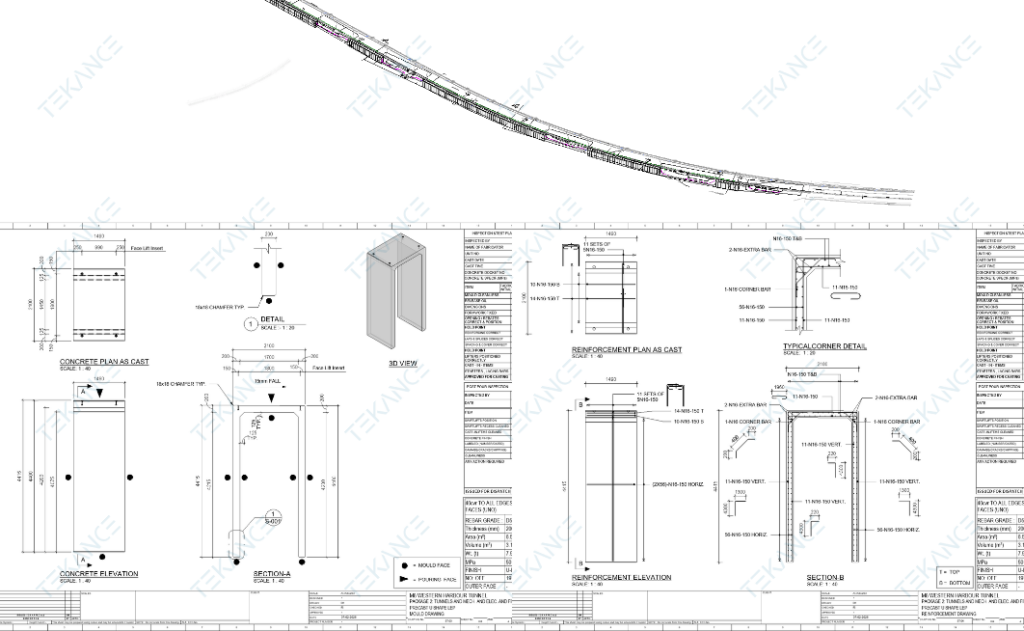
Need Expert Precast Detailing Services? Let’s Talk!
✅ Accurate precast detailing to eliminate costly on-site errors
✅ Faster construction timelines with pre-engineered solutions
✅ Quality-assured components designed for durability
How Are Precast Concrete Components Made?
The manufacturing process happens in a controlled environment to ensure the highest quality. Here’s how it works:
1️⃣ Creating the Mold – A mold is made in the exact shape of the component.
2️⃣ Pouring the Concrete – A high-quality concrete mix is poured into the mold.
3️⃣ Reinforcement – Steel bars are added for extra strength.
4️⃣ Curing – The concrete is cured under controlled conditions.
5️⃣ Quality Control – Each component is inspected for defects.
6️⃣ Transportation – Once ready, the components are shipped to the construction site.
Frequently Asked Questions (FAQs)
Is Precast Concrete Stronger than Traditional Concrete?
Yes! Because it’s made in a factory under perfect conditions, precast concrete is often stronger than cast-in-place concrete.
How Long Does Precast Concrete Last?
Precast concrete can last 50 to 100 years with proper maintenance.
Is Precast Concrete Expensive?
While it costs more initially, it saves money over time due to faster construction and lower labor costs.
Can Precast Concrete be Customized?
Yes! It can be designed in different shapes, sizes, and colors to fit any project.
External Resources for Further Reading
- National Precast Concrete Association (NPCA) – https://precast.org
- Sustainable Precast Concrete – https://www.sustainableprecast.ca


